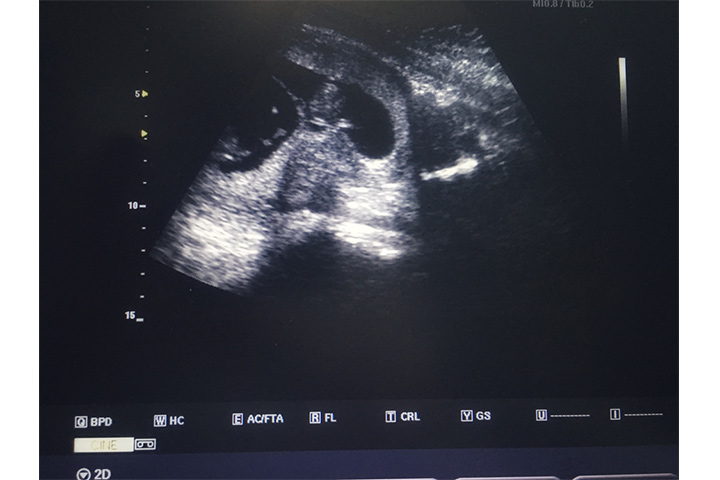
Image: Shutterstock
In 2015, an Australian couple, Kate and Peter Hill witnessed a miracle when Kate had fallen pregnant again when she was already expecting. Being diagnosed with the polycystic ovarian syndrome in 2006, Kate was told by doctors that she had a very low chance of conceiving. However, after undergoing hormone therapy, Kate had finally become pregnant. The couple was in for a surprise when she conceived again in 10 days. Since it is a rare occurrence, the couple’s obstetrician had to resort to google to understand more about the situation. This rare occurrence is referred to as superfetation, where only 10 cases have been documented across the world so far (1).
What Is Superfetation?
Superfetation is a rare case where a pregnant woman falls pregnant for the second time with another fetus. In this case, fertilization and implantation occur again when there is already a fetus in the uterus. Superfetation is different from a twinning gestation as the woman conceives again when she is already established as pregnant. Babies who are conceived this way will have different gestation ages and hence the due date for each fetus may vary (2).
Even though the fetus that was conceived first will have a longer gestation age than the other, both the babies are likely to share the same birth date. With superfetation, doctors may decide to deliver the babies via labor induction or schedule a C-section so that the babies can be delivered at the same time. In some cases, the baby who is gestationally older may look bigger than the younger one since they had been in the uterus for a relatively long time, having had the opportunity to grow and develop in the womb (3).
Superfetation: A Brief History
Superfetation is an extremely rare occurrence in humans. In fact, calling it rare would be an understatement as only fewer than 10 cases of superfetation in humans have been reported so far. However, there are several cases where animals have been subject to this phenomenon. Superfetation occurs in mammals who have more than one uterus or if the oestrus cycle continues even after becoming pregnant. Animals such as rabbits, rodents, sheep, horses, and marsupials are claimed to have been subject to superfetation (4).
Superfetation in humans has always been studied with suspicion. However, there have been some well-documented cases in the past that have proven to be insightful. In 1960, Mary Tress gave birth to twins, but the doctors immediately identified that one of the babies looked premature. Upon further evaluation, Dr. Weinberg found that one of the babies was 2 months premature. In yet another case in 2009, a couple from Arkansas grabbed media attention when the mom Julia Grovenburg learned that she was pregnant with another child just two and a half weeks after her first conception. The doctors even gave Julia different due dates for the babies if she were able to carry her pregnancy full term. However, they were delivered together via C-section.
How Does It Happen?
For a woman to get pregnant, she must be ovulating. In the same way, for superfetation to happen, the woman should continue ovulating while she is pregnant. But it is almost impossible as one stops ovulating after she becomes pregnant. When a woman becomes pregnant, the female body produces high levels of progesterone hormone which in turn stops the release of another egg by the ovaries. The uterus lining also thickens which prevents the attachment of another embryo. And, a mucus plug is formed at the cervix that acts as a protective barrier between the fetus and the outside world while also preventing any sperms from entering inside (5). As you can see, all of the above highly unlikely things should happen to make superfetation possible in humans.
Superfetation is still considered a rare phenomenon among humans, and only further studies can tell us how and why it actually happens. We hope our article helped gain a better understanding of the term. Did we clear all your questions and concerns associated with the same? Let us know in the comments section below.
















